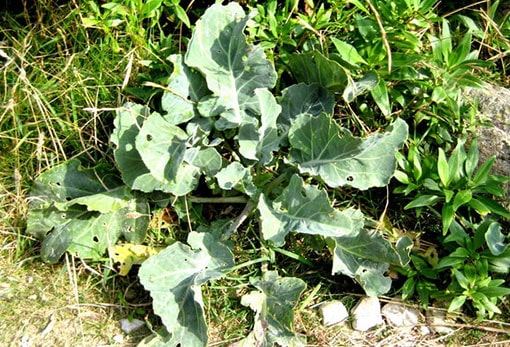Is Cauliflower Man-Made?
Is cauliflower man-made or is it naturally found in its current form? Find out the origins of cauliflower and several curiosities about this plant in this article.
Cauliflower is a plant in the family Brassicaceae, which is also commonly known as the mustards, crucifers, or cabbage family. Although it is biennial, it’s mostly grown as annual.
All parts of cauliflower are edible, including the leaves and stems. However, this vegetable is mostly grown for its large flowering head, used in various dishes or pickles. Not only is cauliflower a delicious vegetable, but it is also high in vitamins and low in calories.
Throughout the world, there are hundreds of species of cauliflower. Many people distinguish this vegetable from broccoli through its flowering heads’ white color. However, these can also be green, purple, or orange in some varieties.

Cauliflower grows well in cooler environments. The best time to plant most varieties is in the spring. Still, several species can be planted in mid-summer for a fall harvest.
But what do we know about the origin of this plant? Is cauliflower a vegetable that naturally occurred, or is it just another plant that humans made in a lab? That’s what we’re going to find out next.
Contents
Is Cauliflower Man-Made?
The short answer is yes; cauliflower is human-made. Cauliflower did not always exist as a plant in the form we all know today but was created by humans through a lengthy process called selective breeding.
What do you think cauliflower, broccoli, cabbage, Brussels sprouts, kale, and kohlrabi have in common?
Many would probably say their slightly sweet taste or that they belong to the same family. That would be entirely correct. However, there’s more to that.
Surprisingly, all the plants mentioned above are, in fact, parts of a single plant, Brassica oleracea (commonly known as wild cabbage or wild mustard).

All of them were developed from various parts of Brassica oleracea:
- Kohlrabi – made out of the stem.
- Kale – obtained from the leaves.
- Brussels sprouts – made out of the lateral buds.
- Broccoli – made out of portions of the stem and flowers.
- Cabbage – developed from the terminal buds.
- Cauliflower – made out of the flower clusters.
Although we consider all these six as different plants, they all have the same ancestor. However, broccoli is the closest cultivated relative of cauliflower.
How Was Cauliflower Made?
As already mentioned earlier, cauliflower is the result of an extensive process called selective breeding.
Selective breeding involves developing new plants or obtaining some with more desirable characteristics from existing plant species through a natural process without modifying their genomes in a lab.
Since the oldest times, farmers have favored plants with more generous yields, more flavorful fruits, fewer seeds, more edible pulp, and so on. This has led to an artificial selection process that gave life to distinct variants of some existing plants or to completely new plants.
This breeding method does not only apply to plants, but it is also frequently utilized in animals’ breeding. More precisely, this involves breeding parents with special characteristics to produce offsprings with more desirable traits.
In essence, the first cauliflower plant appeared through many decades of selective breeding and not due to direct genetic manipulation in a lab. However, GMO species also exist today due to some cultivators’ urge to obtain plants with higher yields or better resistance to pests and drought.
When And Where Did Cauliflower Appeared?
Although it’s not exactly known when the first cauliflower varieties appeared, most sources indicate that this event occurred somewhere between the 500s and 1500s AD.
Early types of cauliflower were often associated with Cyprus. Thus, many believe that the island of Cyprus is the place where this plant originate. According to Flower Development: Origin of the cauliflower by David R.Smyth, cauliflower has grown in popularity and was later introduced to various parts of Europe around the end of the 15th century.
Conclusion
Cauliflower is a man-made plant that would not exist without human interference with Brassica oleracea, the wild plant that stands at the core of today’s cauliflowers.
Thanks to farmers’ efforts over thousands of years, we can enjoy cauliflower in its current form today.
Many other common fruits and vegetables are human-made. Plants such as corn, bananas, strawberries, watermelons, and carrots, would have a completely different shape or taste without humans’ intervention.

